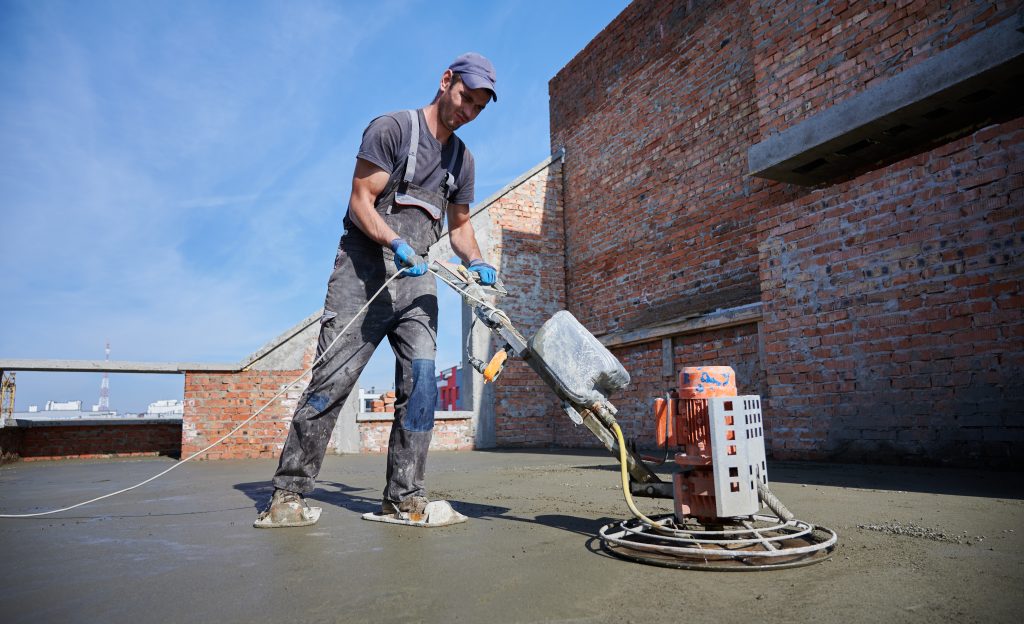Have you ever wondered why a simple step like sealing your concrete after cleaning can make a significant difference?
Imagine a shield safeguarding your hard work and investment against the elements, wear, and tear. By taking this crucial post-cleaning step, you are not just maintaining a pristine appearance but also fortifying your concrete against potential damage.
But there’s more to it than just protection; the benefits of sealing go beyond the surface. Curious to uncover the hidden advantages?
Importance of Concrete Sealing
To protect your concrete surfaces from damage and prolong their lifespan, sealing is an essential step after cleaning. After cleaning your concrete surfaces, applying a high-quality concrete sealer act as a protective barrier against various elements that can cause deterioration. Whether it’s foot traffic, harsh weather conditions, or exposure to chemicals, a concrete sealer helps shield the surface, preventing water penetration and the formation of cracks.
In addition to safeguarding your concrete, sealing also enhances its appearance by providing a glossy finish that improves its aesthetic appeal. Furthermore, by sealing your concrete, you’re making maintenance easier and more cost-effective in the long run. It reduces the need for frequent cleanings and minimizes the risk of stains setting in.
If your concrete surfaces have existing damage, such as spalling, it’s crucial to address these issues before sealing. Consider hiring professionals for spalling repair to ensure that your surfaces are properly restored before applying the concrete sealer for optimal protection and longevity.
Protection Against Damage
Concrete sealing plays a crucial role in safeguarding your surfaces against potential damage, ensuring longevity and durability. By creating a protective barrier on the surface of the concrete, sealing helps to prevent water, oil, and other substances from penetrating and causing harm. This protection is particularly important in outdoor areas exposed to the elements, such as driveways, patios, and sidewalks. Without proper sealing, concrete can be vulnerable to cracks, erosion, staining, and mold growth.
Sealing your concrete surfaces also helps to guard against freeze-thaw damage in colder climates. When water seeps into unsealed concrete and then freezes, it expands, creating pressure that can lead to cracks and deterioration over time. By sealing the concrete, you provide an added layer of defense against this type of damage, ultimately extending the lifespan of your surfaces.
Enhancing Longevity and Appearance
Enhancing the longevity and appearance of your concrete surfaces is essential for maintaining their integrity and visual appeal over time. Concrete sealing plays a vital role in protecting your surfaces from wear and tear caused by various elements such as water, oil, dirt, and UV rays. By applying a quality sealant, you create a protective barrier that helps prevent moisture penetration, staining, and cracking, thus extending the life of your concrete.
Moreover, sealing your concrete enhances its aesthetic appeal by bringing out the natural colors and textures of the surface. It provides a glossy or matte finish that not only looks visually pleasing but also adds a layer of sophistication to your space. Whether it’s a driveway, patio, or indoor concrete floor, sealing helps maintain a fresh and clean look that lasts longer.
In addition to the functional benefits, enhancing the appearance of your concrete surfaces through sealing can also increase the overall value of your property. A well-maintained and visually appealing concrete surface can significantly boost curb appeal and leave a lasting impression on visitors or potential buyers.
Simplifying Maintenance and Cleaning
By applying a protective sealant, you can simplify the maintenance and cleaning of your concrete surfaces. Sealants act as a barrier, preventing dirt, stains, and other contaminants from penetrating the concrete. This makes routine maintenance much easier as these substances can be easily wiped or rinsed off the sealed surface.
When it comes to cleaning, sealed concrete surfaces are less prone to absorbing spills, oil, or other liquids that can leave stubborn stains. This means that regular cleaning with just soap and water can effectively remove most grime without requiring harsh chemicals or intensive scrubbing. The sealant ensures that the surface remains smooth and less porous, making it resistant to the buildup of dirt and grime.
Benefits of Sealing After Cleaning
Sealing your surfaces provides an additional layer of protection against future stains and damage. It helps to prevent liquids like oil, grease, or chemicals from penetrating the porous surface of the concrete, making it easier to clean up spills before they can cause permanent stains.
By creating a barrier on the surface, sealing also reduces the chances of water seepage, which can lead to cracks and erosion over time.
Moreover, sealing after cleaning enhances the durability of your concrete surfaces by protecting them from the harmful effects of weather exposure, such as UV radiation and freeze-thaw cycles. This can help prevent cracking, spalling, and other forms of deterioration, ultimately extending the lifespan of your concrete.
Additionally, sealed concrete surfaces are easier to maintain, requiring less frequent cleaning and reducing the need for costly repairs in the long run.
Conclusion
In conclusion, concrete sealing is crucial for protecting against damage, enhancing longevity, and simplifying maintenance while maintaining its appearance. Contrary to common belief, you do not have to apply sealer after every cleaning.
By taking this extra step, you can ensure that your concrete surfaces remain in top condition for years to come.
Don’t skip this important step in your cleaning routine – your concrete will thank you!

